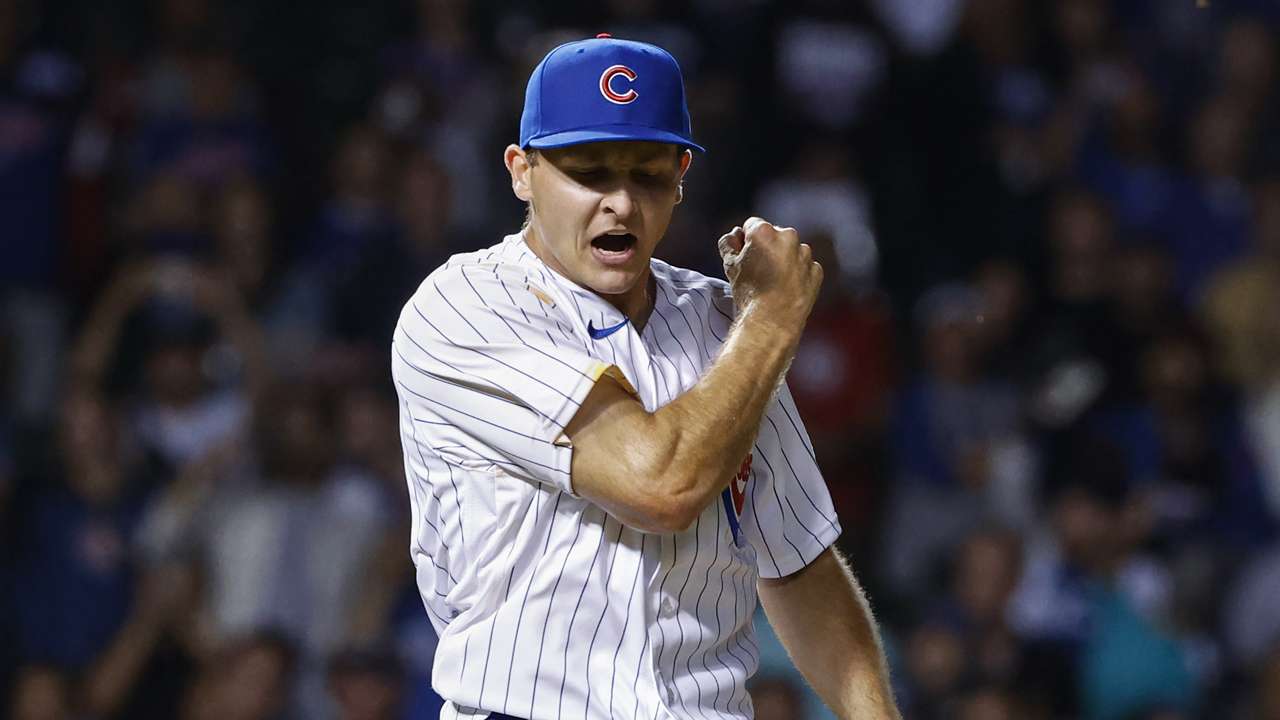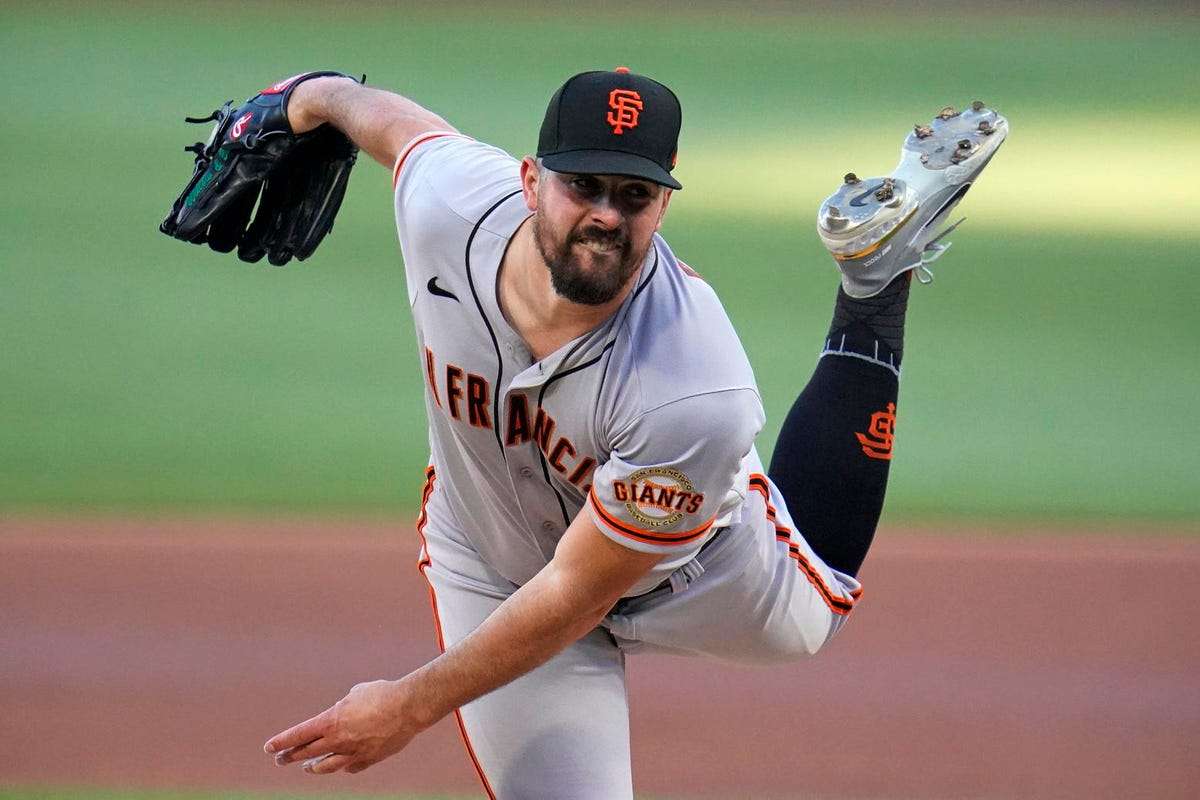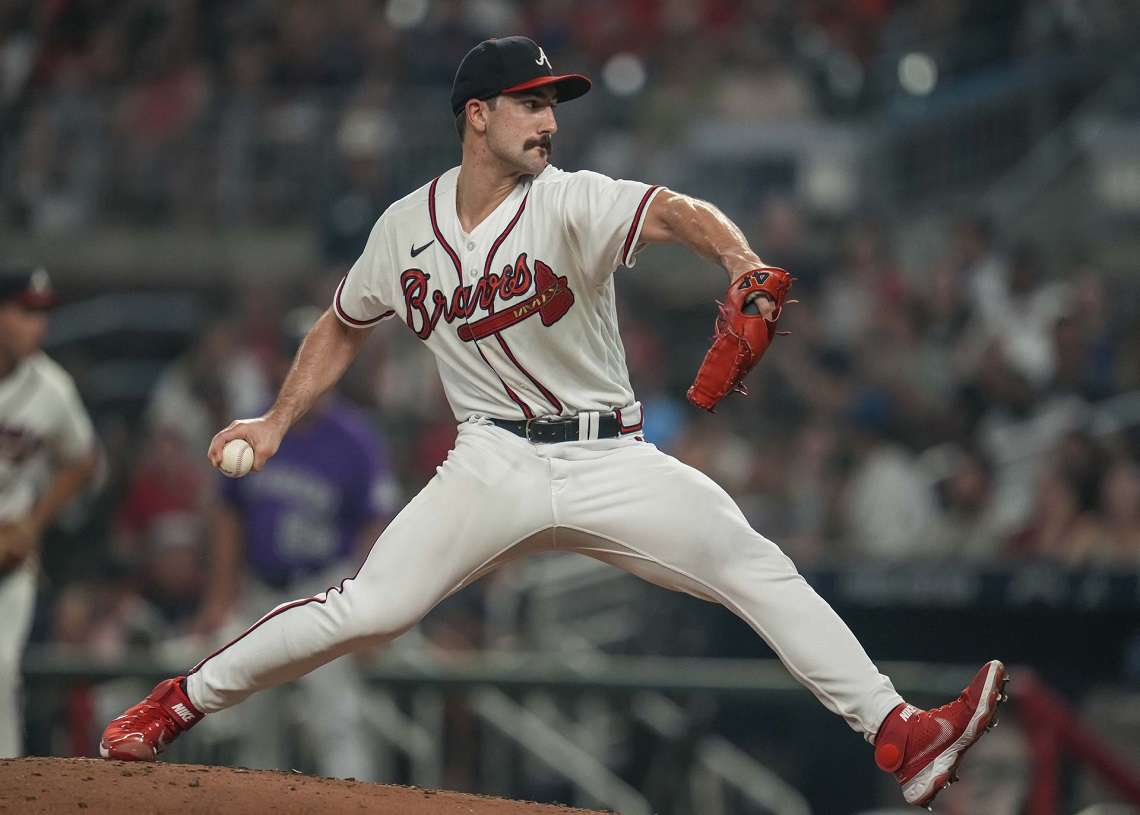The Major League regular season is over, giving way to the emotions of some play off that promise to be historic. Several players and teams have left very outstanding notes throughout the contest and will have their reward at the end of the road, but there is still a long time to know the verdict on the official prizes.
Who will be the “Most Valuable Player” or the “Manager of the Year”? Who will get the “Cy Young” or the “Rookie of the Year”? To answer these questions and draw conclusions about the regular season, we offer our early NL prize predictions, as well as our vote for the surprise team and the disappointment of the new circuit.
“Rookie of the Year”: Spencer Strider
Yeah, we know, everyone who debuts with the Braves looks like they’re going to be a good rookie. Michael Harris, Spencer Strider, Bryce Elder, Vaughn Grissom and we could count on. The truth is that the “Rookie of the Year” award will stay in Georgia. The question is Harris or Strider?
If you tell me Harris will win, I respect that, but I prefer Spencer, even though he hasn’t pitched since Sept. 18 because of oblique strain. To understand what he is achieving right, I bring you several points:
* Since earned runs became an official stat (1913), only three rookie pitchers had posted an ERA below 2.70 throwing at least 130 innings, with 200 strikeouts and ten wins. The first to do so was Gary Nolan in 1967, followed later by Dwight Gooden (1984) and the Japanese Hideo Nomo (1995). Strider now joins this exclusive club, in which Gooden and Nomo were awarded “Rookie of the Year.”
* “The boy with the mustache” as he is known in the Club Housebecame the fastest pitcher to reach 200 strikeouts in an MLB season in the modern era.
* In the Wild Card era (since 1995), Strider is the fourth rookie with at least 130 innings pitched who has been 50 points better than average according to ERA+. The others are Trevor Rogers (2021), José Fernández (2013), Brandon Webb (2003), and Roy Oswalt (2001).
* Finally, it is important to clarify that Strider did not start as a starter, he went from bullpen to rotation and in both places he achieved success.
“Manager of the Year”: Oliver Marmol
With the permission of Rob Tompson (Phillies), Dave Roberts (Dodgers), Brian Snitker (Braves) or Buck Showalter (Mets), I would give “Manager of the Year” to Oliver Mármol. The goal was not easy, mainly when he had to replace Mike Shildt after surprisingly putting the franchise in the postseason last year.
In this case, the palms for the organization of the Cardinals of San Luis, they bet on Mármol and things have turned out wonderfully. Oliver, unlike his predecessor, places a lot of emphasis on his relationship with his players, and he is also a helmsman who uses sabermetrics in a measured way, even not playing chess with his line-up.
The result has been to win the National League division with a balance of 92-66 and travel to the promised land for the fourth consecutive season. Also, St. Louis has posted more than 91 wins for the first time since 2015.
To make matters worse, he has had a luxury offense, stable pitching and three legends who are retiring this year: Albert Pujols, Adam Wainwright and Yadier Molina. Without question, it’s been a dream season for the Cards and it could be better.
“Cy Young”: Sandy Alcantara
The fight for the “Cy Young” is very close and can be limited to three names that have left spectacular numbers during the 2022 season. Zack Gallen (Arizona), Julio Urías (Dodgers) and Sandy Alcántara (Marlins) appear as clear candidates.
On the one hand, Julio Urías has the second highest number of wins (17) and the best ERA (2.16) in the national league. At the same time, he has a 0.96 WHIP, with an excellent .199 batting average, departments in which he ranks third on the old circuit.
Next, we have Zackç Gallen, the Dbacks ace, who has the best WHIP (0.91) and opponent average (.186). But despite what the top two candidates have accomplished, I’m going with Sandy Alcantara, mainly because he reminds me of what an “old school” pitcher is.
The Dominican has been brilliant in the Marlins’ rotation, to the point of posting the second-lowest ERA on tour (2.28) and sixth-lowest WHIP (0.98). Additionally, he pitched the most innings in baseball (228.2) in 2022. He also has the most games completed (six), well ahead of second on that list, Framber Valdez (Astros-three).
In 22 of his 32 starts, he has pitched at least seven innings. Since 2015, no pitcher had so many starts with such characteristics, and the one who achieved it back then was stellar as Clayton Kershaw. If we look at his 14 games out of at least eight inningswe would have to go back to 2014 to see the last ones who did it: Kershaw (15) and David Price (17).
Sandy is an anomaly in this era and one explanation for that was Don Mattingly’s exchange with a reporter mid-season. “Why do you leave him for so long in the games?” They questioned the helmsman, who fired a forceful answer: “A pitcher like him inspires confidence and security, taking him out would affect him.” I wish there were several Alcántara in MLB, the true “workhorses” would return to the rotations.
Most Valuable Player: Paul Goldschmidt
With the best slugging (.578) of the National League, also with the best OPS+ (180) and OPS (.981), I see Paul Goldschmidt as the next “Most Valuable Player” of the old circuit. Right now, he’s among the top three hitters in key departments, both traditional and modern metrics. In addition, he has the fifth-most home runs (35) in the National League and has been an above-average first baseman based on his defensive performance.
To put more shine on his campaign, he has only made a mistake in 1097.2 innings defended, which leaves us with another sample of his dominance in the initial. If Paul wins the award, it would be the 21st time a Cardinals player has won the MVP, the first since 2009 when Albert Pujols won it.
Upset of the Year: The Cubs’ second half of the season
As such, no National League qualifier has been a surprise, so I focused on a team that improved its performance within the contest itself. After careful analysis, the most surprising thing I’ve seen is the second half that the Chicago Cubs had.
Before the Opening Daywe knew it would be a difficult year for the cubbies, especially as they were going into a lengthy rebuild. However, they have taken the first step thanks to the contribution of some youngsters like Hayden Wesneski, Javier Assad and Keegan Thompson.
The truth is that the Cubs have had a promising second half. Since the All-Star Game, they were the fifth team in the old circuit with the most wins (37-29), only surpassed by the Dodgers, Braves, Cardinals and Mets, the four most consistent teams in the National League.
One of the key points in his improvement from one half to another has been the starting rotation. David Ross pitchers post a (3.01) ERA since the Summer Classic (third-best in the league). At the same time, they have posted the 13th-lowest batting average against.
Improve rotation and bullpen It’s something fundamental to compete, we’re seeing it with the Orioles and we’ve seen it with the Brewers in the past. The Cubs will have to spend several seasons putting the puzzle together, but at least they’re headed in the right direction.

Disappointment of the Year: San Francisco Giants
The Giants have gone from the sublime to the ridiculous, after a year in which they set a record for wins for the franchise (107). This course, they have been the clear disappointment of the National League with a balance of 81-81, insufficient to aspire to the postseason.
What happened? How could they go back so fast? Those are questions we ask ourselves when we think about the whole of the bay this year. The first thing is that they have kept the same core of 2021, except for the retirement of Buster Posey.
Although they lost Kevin Gausman in the rotation, they won Carlos Rodón. In that sense, the worst news has been the injury of Anthony DeSclafani. Overall numbers for Gabe Kapler’s ensemble changed overnight and here’s some evidence.
Offensive:
2021: Offensive line (Average/On-base percentage/Slugging/OPS) of .249/.329/.440/.769; runs per game: 4.96; home runs: 241; driven: 768
2021: Offensive line (Average/On-base percentage/Slugging/OPS) of .234/.315/.390/.705; runs per game: 4.42; home runs: 186; driven: 683
The drop in averages is noticeable, as is the number of runs created per game, but the main setback for the offense was power. From 2021 to 2022, the Giants had the eighth-biggest drop in home runs at (-55) and that influenced their production.

Pitching:
2021: Runs allowed per game: 3.67; effectiveness: 3.24; WHIP: 1.15
2022: Runs allowed per game: 4.30; effectiveness: 3.85; WHIP: 1.28
In pitching, despite the fact that the rotation has not been the same as in 2021, the problem has been in the bullpenwhich went on to become one of the best in the business and is now below par.
We said not long ago that the Giants had copied the Rays’ modus operandi, and may continue to do so, since they’ve already made good dividends, but Farhan Zaidi, president of operations, should remember the saying: “He who imitates fails.” This is a big franchise with a lot of history to take that approach.
In sports, surprise seasons appear every year. We can remember that Nats contest in 2019, when they started with a 19-34 balance and ended up beating the Astros in the World Series.
Perhaps the Giants’ 2021 was one of those, although it didn’t end the way they wanted because of the Dodgers, who eliminated them in five games in the Division Series. Any theory we come up with will be used against San Francisco. They will have to deal with problems quickly.













![[Video] Disgusting: Angry woman threw dog excrement at arepa vendors [Video] Disgusting: Angry woman threw dog excrement at arepa vendors](https://latin-american.news/wp-content/uploads/2022/10/Video-Disgusting-Angry-woman-threw-dog-excrement-at-arepa-vendors-1024x630.jpg)



